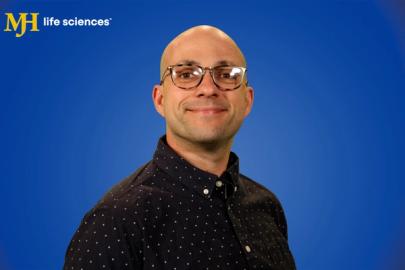- About Us
- Advertise / Support
- Editorial Board
- Contact Us
- CancerNetwork.com
- TargetedOnc.com
- OncLive.com
- OncNursingNews.com
- Terms & Conditions
- Privacy
- Do Not Sell My Information
- Washington My Health My Data
© 2025 MJH Life Sciences™ and CURE - Oncology & Cancer News for Patients & Caregivers. All rights reserved.
What the FDA Approval of Inluriyo Means for Patients With Breast Cancer

A nationally-published, award-winning journalist, Alex Biese joined the CURE team as an assistant managing editor in April 2023. Prior to that, Alex's work was published in outlets including the Chicago Sun-Times, MTV.com, USA TODAY and the Press of Atlantic City. Alex is a member of NLGJA: The Association of LGBTQ+ Journalists, and also performs at the Jersey Shore with the acoustic jam band Somewhat Relative.
CURE spoke with Dr. Komal Jhaveri about the findings of the EMBER-3 clinical trial.
The U.S. Food and Drug Administration (FDA) has approved Inluriyo (imlunestrant) for the treatment of adults with estrogen receptor (ER)-positive and HER2-negative breast cancer that has advanced or spread, and whose disease worsened after receiving at least one prior line of endocrine therapy.
The approval was based on the results of the EMBER-3 clinical trial, which showed that the treatment lowered the risk of cancer progression or death by 38% compared with standard endocrine therapy.
CURE recently sat down for an interview with Dr. Komal Jhaveri, breast medical oncologist and early drug development specialist at Memorial Sloan Kettering Cancer Center in New York City, to discuss this approval and its significance for patients.
CURE: What is the significance of this approval for patients with breast cancer?
Jhaveri: I think the significance for the approval of [Inluriyo], which is an oral SERD or a serum estrogen receptor degrader or down-regulator, in my mind, is three-fold. One, it helps us address an important mechanism of resistance to endocrine therapy, what we call ESR1 mutations, because what we've been able to show is that [Inluriyo] is effective against ESR1-mutant tumors, even despite patients receiving prior hormonal therapies.
Second, I think, which is very important for our patients is that this is an oral agent. ... And because this is an oral agent, this is more convenient for our patients. It does not require them to come to the hospitals or clinics to get their injections. And so, it makes it a lot easier for them from that convenience perspective, but also from a perspective of being able to just take an oral agent without getting any discomfort from intramuscular therapy.
And last but not the least, we've shown proven benefit, which is why this drug got approved. When we compared it head-to-head with our standard of care options, predominantly [Faslodex] and other medications such as [Aromaxin (exemestane)] as well in the phase 3, EMBER-3 trial, [Inluriyo] showed a proven improvement in progression-free survival.
What treatment gaps remain for patients?
While we've made significant leaps with approvals with oral options such as oral SERDs, we first had [Orserdu (elacestrant)] and now we have [Inluriyo], I think there still remain some gaps that we really need to work towards. What are these gaps? These include that current approvals are specifically for ESR1-mutant tumors, which tells us that for the remaining 50% to 60% of tumors that we call ESR1 wild-type, we still need more effective regimens, and perhaps combination therapies could be important in this particular subset of tumors. And hopefully we'll see that in the future. Monotherapy is important for a group of patients, but as I said, combinations might be important for other patients when monotherapy is probably only giving us some improvement in progression-free survival, but with combinations, we hope to achieve a further, durable or prolonged benefit with progression-free survival from cancer growth.
We've also not been able to necessarily cure or overcome the issue of endocrine resistance. I don't think we still understand all the mechanisms of resistance to these novel oral SERDs as well. We figured out that ESR1 mutation is a resistance mechanism to existing therapies such as aromatase inhibitors, and so we're very grateful that we have oral SERDs such as in [Inluriyo] to overcome the ESR1 mutations, but we still need to fully understand what are the mechanisms of resistance, and how do we address that in the future? So that still remains.
We also do need effective strategies for patients who've already had treatment with CDK46 inhibitors the actual sequencing of what therapy might be the most appropriate. We still have an unmet gap there, for instance, if we have a tumor that harbors both ESR1 mutation, first treat this tumor with [Inluriyo]-like therapies, or [Orserdu]-like therapies, or should we treat them with a combination regimen that focuses on the PIK3A mutation? I think we're not very clear exactly how to approach that definitively yet, but those research efforts are underway.
Reference
- “FDA Approves Inluriyo for ER+, HER2– Metastatic Breast Cancer,” CURE; https://www.curetoday.com/view/fda-approves-inluriyo-for-er-her2-metastatic-breast-cancer
Transcript has been edited for clarity and conciseness.
For more news on cancer updates, research and education, don’t forget to subscribe to CURE®’s newsletters here.
Related Content:



